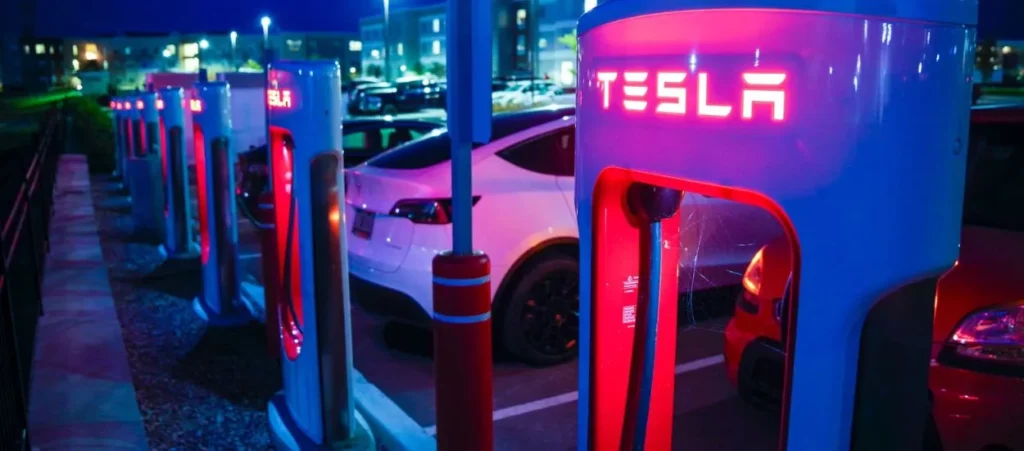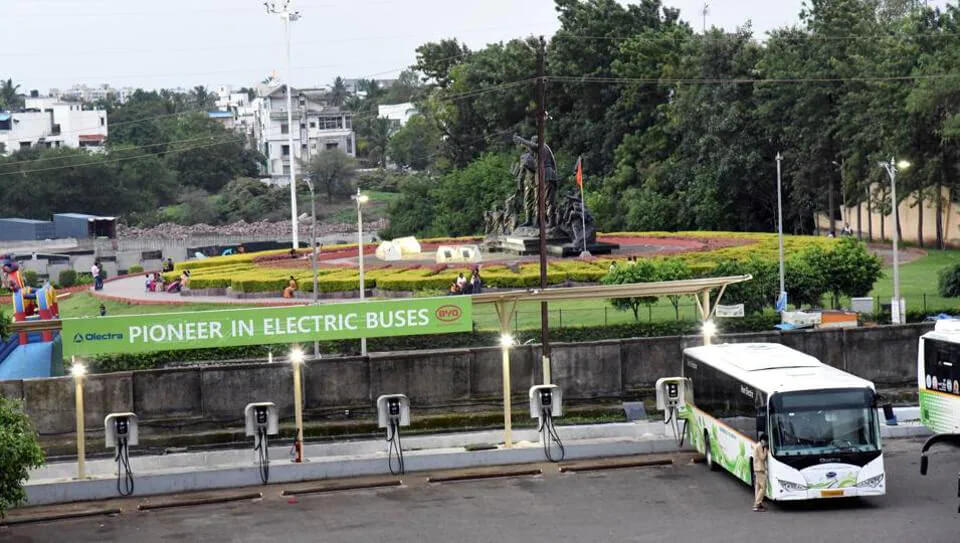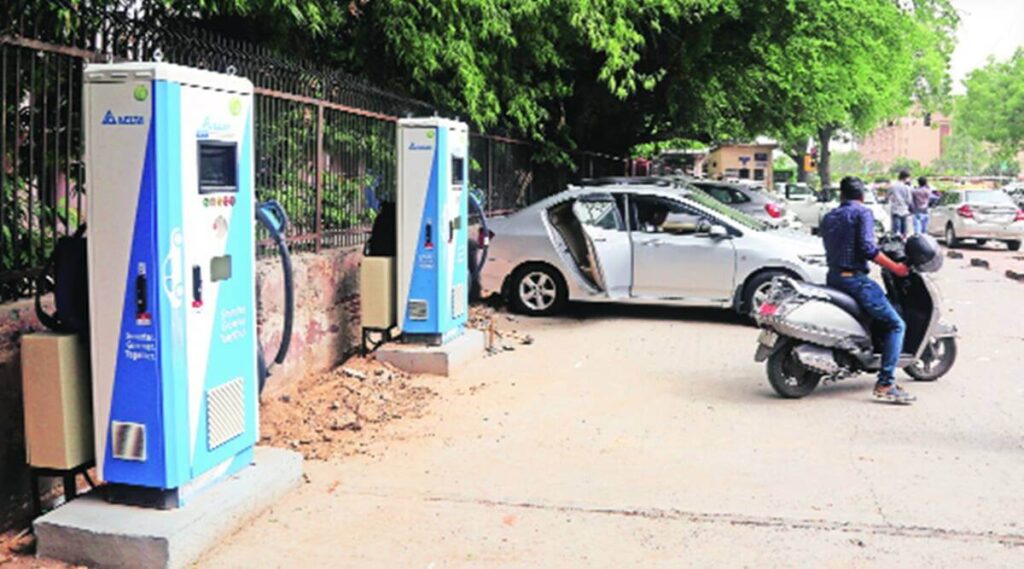
Electric vehicles (EVs) are becoming increasingly popular in the USA as electric vehicle sales continued to rise during the first half of the year to more than 557,000 vehicles, or 7.2% of all new vehicle sales. The EV share of the market last year was 5.8% with just over 807,000 sales.
Cox is forecasting that EV sales will grow to over 1 million for the first time this year. The consulting firm LMC Automotive predicts that EVs will hit 14.4% of the market in 2025, and be close to 40% by 2030.
However, the public charging infrastructure is failing to keep pace with increase in number of electric vehicles. According to US Department of Energy, there are currently just under 8,700 direct-current fast-charging stations in the U.S. and Canada with nearly 36,000 charging plugs (1).
Lack of Charging Infrastructure in USA
Lack of public charging infrastructure has become a barrier to EV adoption, as many potential EV buyers are concerned about being able to find a place to charge their cars. More than half of all Americans say they’re at least thinking about an electric vehicle for their next car purchase. But they want to know, where will they plug them in? A big sticking point is the lack of public EV chargers (2).
Broken EV chargers remain another major barrier to broader EV adoption. Overall satisfaction with EV charging in the US has dropped year over year, the market research firm reports, and is now at its lowest level ever. According to the Energy Department’s database of public EV chargers, around 4% or 6,261 of the 151,506 public charging ports were reported “temporarily unavailable”. A charger can be identified as temporarily unavailable for several reasons, ranging from routine maintenance to power issues (3).
The National Renewable Energy Laboratory (NREL) Study
In a recent NREL report (4), researchers estimated the number, type, and location of chargers needed to create a comprehensive network of EV charging infrastructure, one that can support an anticipated 30–42 million EVs on the road by 2030. Researchers project the national charging infrastructure will require:
- 182,000 publicly accessible fast charging ports to enable long-distance travel and ride-hailing electrification and to support those who lack access to residential charging.
- 1 million Level 2 charging ports at publicly accessible locations—including high-density neighborhoods, office buildings, and retail outlets.
- 26 million Level 1 and Level 2 charging ports at privately accessible locations—including single-family homes, multifamily properties, and workplaces.
What’s happening to alleviate the problem
The Biden administration has made it a priority to address the lack of public charging infra in USA. In his infrastructure plan, President Biden has proposed investing $15 billion in EV charging infrastructure. A provision in the Bipartisan Infrastructure Law, passed in 2021, provides $5 billion in subsidies to states for EV charging stations and related infrastructure between 2022 and 2026.
In September 2023, the US Department of Transportation is authorizing $100 million to “repair and replace existing but non-operational, electric vehicle (EV) charging infrastructure.” The investment comes from a $7.5 billion pot of money for EV charging that was approved as part of the 2021 Bipartisan Infrastructure Law. The department has already approved around $1 billion for the installation of thousands of new EV chargers along major highways in the US.
In May 2023, Tesla & Ford announced that they had struck a deal to give Ford EV owners access to more than 12,000 Tesla superchargers in the U.S. and Canada starting in early 2024. A flurry of similar deals between Tesla and other EV makers, including GM, Volvo Cars, Polestar and Rivian, were announced in the weeks that followed.
In July 2023, Seven major automakers announced plans to build a large electric vehicle charging network in North America. The automakers, General Motors, BMW, Honda, Hyundai, Kia, Mercedes-Benz, and Stellantis, plan to invest billions of dollars to build 30,000 fast chargers in the United States and Canada by 2030.
On other end, meanwhile, progress is being made on formalizing the North American Charging Standard (NACS) design as an industry standard. In November 2022, the NACS or Tesla’s proprietary electric vehicle (EV) charging connector and charge port was opened for use by other EV manufacturers and EV charging network operators worldwide. NACS offers both AC and DC charging in one compact plug, using the same pins for both, and supporting up to 1MW of power on DC.
In June 2023, SAE International, which sets key engineering standards for the auto industry, said that it’s working on official performance and safety standards for NACS charging plugs and that it expects to issue them within six months.
ABB said that it will offer NACS plugs as an option on its chargers as soon as testing and validation of the new connector is complete. EVgo said in June that it will start deploying NACS connectors on the high-speed chargers in its U.S. network later this year. And ChargePoint, which installs and manages chargers for other businesses, said its clients can now order new chargers with NACS connectors and that it can retrofit its existing chargers with the Tesla-designed connectors as well.
In addition to federal funding, there are a number of other efforts underway to address the lack of charging infrastructure. Some states, such as California and New York, have set ambitious targets for the number of charging stations that need to be installed.
Businesses are also starting to install chargers at their facilities, and some cities are offering incentives to businesses and residents who install chargers at home.
What more needs to be done
The first phase of public EV charging infra in USA has been pushed single-handedly by Tesla. Tesla’s network, with the largest number of fast chargers in North America, has 2,050 stations and more than 22,000 plugs in the U.S. and Canada. Other major charging point operators like ChargePoint and EVgo have recently begun taking major steps to improve the “up time” of their chargers, or the percentage of time the charger is available for use.
However to alleviate the charging infra problem in USA, changes need to be made at more fundamental level. Companies such as YoCharge, provide the complete platform for EV Charging Station Management Platform as Service. This now allows, entrepreneurs, small scale operators, bootstrapped startups to launch EV Charging Business.
However, the government needs to support these new businesses & small players. Electricity purchased at a public charger can cost five to ten times more than electricity at a private one. To keep EVs powered up, public charging stations need to be economical, equitably distributed, appealing to use, and wired to a robust power grid.
Democratisation of public charging infra in USA solves more problem than one. It removes the barrier to EV adoption by increasing the number of charging stations, the uptime of charging infrastructure also improves considerably as local teams improve the response time. Further, democratising the public infrastructure also distributes the economic opportunity in sunshine industry enabling equitable income & fostering local growth.



